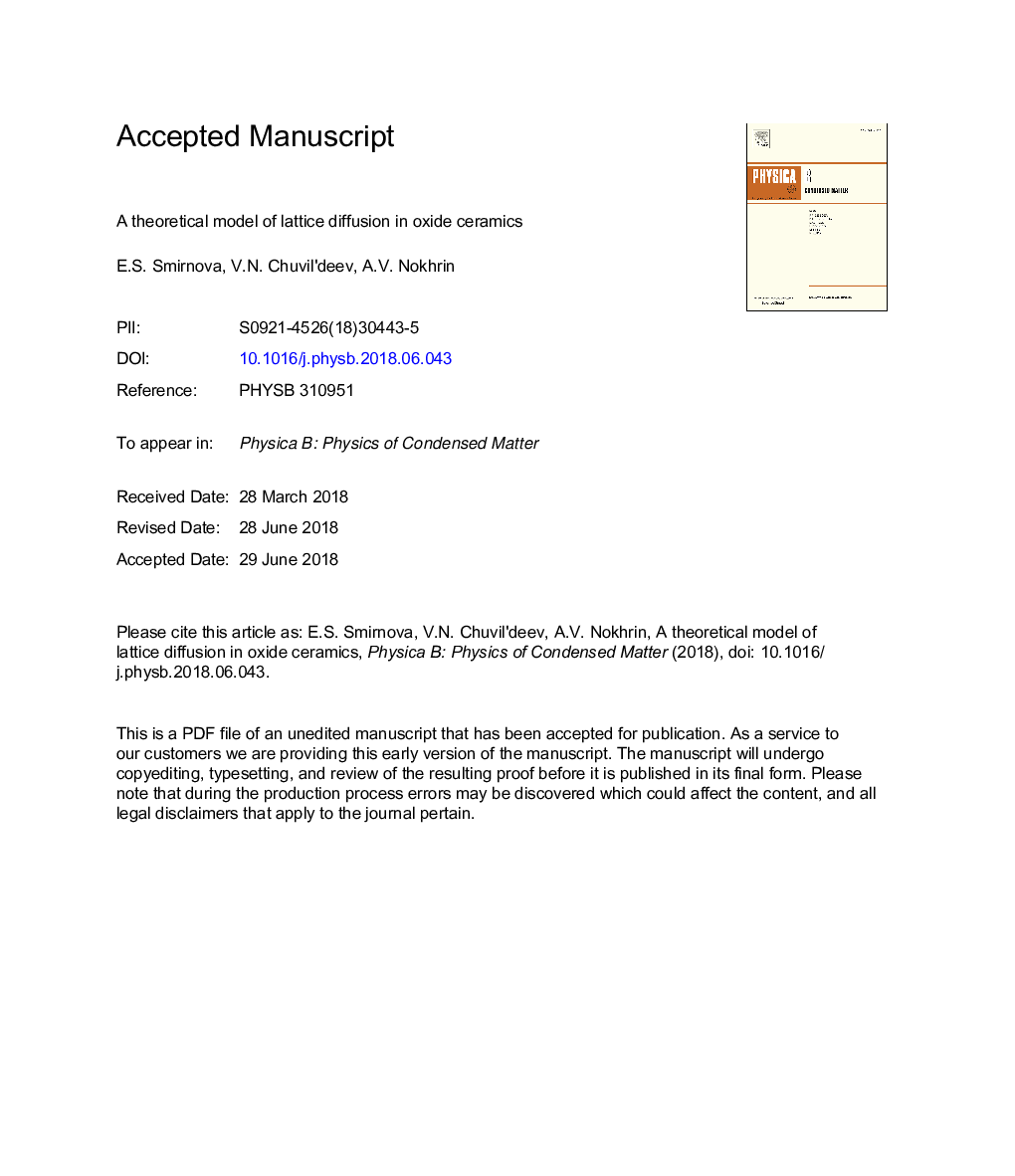| Article ID | Journal | Published Year | Pages | File Type |
|---|---|---|---|---|
| 8160308 | Physica B: Condensed Matter | 2018 | 33 Pages |
Abstract
The authors propose a phenomenological description of volume diffusion in oxide ceramics. The paper considers vacancy and non-vacancy mechanisms of diffusion. In vacancy models, ion migration is described as a fluctuation with formation of a "liquid" corridor that facilitates diffusion transfer of ions through the melt or a fluctuation with formation of a "hollow" corridor where ion movement is activation less. Non-vacancy models concern a fluctuation with formation of a liquid spherical area of a size that corresponds to the first coordination sphere. It has been demonstrated that the vacancy models are fit for cubic metal oxides and the non-vacancy model works well to describe diffusions in non-cubic oxides. The developed modes have been rigorously compared against experimental data, which revealed that diffusion activation energies of metal ions and oxygen ions calculated using the proposed models are in good agreement with the published values for volume diffusion in stoichiometric oxide ceramics.
Related Topics
Physical Sciences and Engineering
Physics and Astronomy
Condensed Matter Physics
Authors
E.S. Smirnova, V.N. Chuvil'deev, A.V. Nokhrin,
